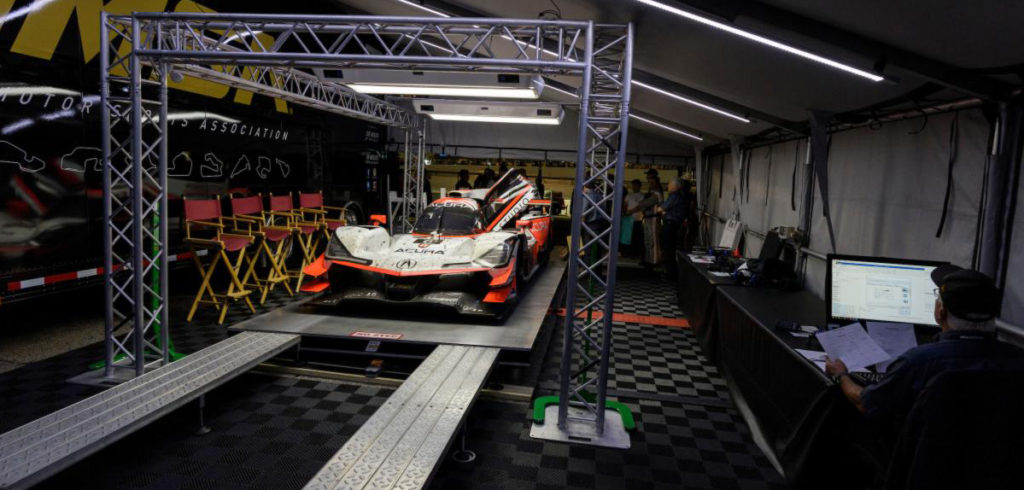With a variety of vehicles and engine configurations featuring in the Daytona Prototype International (DPi), GT Le Mans (GTLM) and the GT Daytona (GTD) classes, the LMP2 class is the closest thing to ‘spec’, with all of the mid-engined cars using naturally aspirated Gibson V8 engines. However, different engines and configurations are only part of the equation.
The mass and weight distribution of each car, especially in the GT classes, can differ substantially between models, and each also has its own aerodynamic capabilities. With such different vehicles competing against each other, Balance of Performance (BoP) is the mechanism IMSA uses to put the cars in each class on as level a technical playing field as possible.
For the DPi and GTLM classes, IMSA’s goal is to have every car within a performance window of 0.3%, and a 0.5% window in GTD. That means the fastest DPi or GTLM car would cross the finish line three tenths of a second ahead of the slowest car in class at the end of a 100-second lap. In GTD, it’d be half a second from fastest to slowest.
In terms of performance windows, that’s tiny from a technical perspective. As a result, the outcome of each race should ultimately come down to driver skill, pit crew performance and race strategy as opposed to a car’s technical superiority.
A similar process also is used for the IMSA Michelin Pilot Challenge, where substantial diversity among manufacturers and technology is found in both the Grand Sport (GS) and TCR classes. Between the WeatherTech Championship and Michelin Pilot Challenge, a total of 17 different manufacturers will compete in 2020.
The day after the 2019 IMSA WeatherTech SportsCar Championship wrapped up, IMSA hosted a collaborative meeting with all participating manufacturers to solicit feedback related to improving the BoP process for 2020. A follow-up meeting led to revised regulations for 2020.
The updated regulations reaffirm IMSA’s data-driven process, while at the same time introducing more ‘human oversight’ of the ITC at the request of the manufacturers. For 2020, the ITC will introduce a new metric aimed a better representing a car’s overall pace during the new Weighted Sorted Sector Lap (WSSL).
The WSSL uses a larger percentage of a car’s demonstrated performance and will be used to complement the previously used “Weighted Eclectic Lap” (WECL), which mainly focuses around peak performance.
IMSA also will continue to utilize recorded wind tunnel data, engine dyno data and logged car data as a reference to monitor the performance of all cars within each specific class. Fuel consumption and fuel flow also will continue to be closely monitored to ensure stint-length compatibility, allowing teams to make the difference based on their choices to run full-rich or save fuel during the race.



